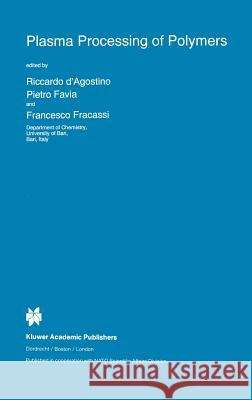Plasma Processing of Polymers » książka
Plasma Processing of Polymers
ISBN-13: 9780792348597 / Angielski / Twarda / 1997 / 532 str.
Cold-plasma modification of polymers and deposition of thin polymer fIlms is a branch of science characterised by an increasing popularity in the last few years for the targe number of new industrial processes which have been realised by its application. Most plasma scientists can attest this through their everyday experience: many technologists, independently of the size of their company address demands for new products in e. g. electronics, automotive components, optics, food and pharmaceutical packaging, biomedical and surgical equipments, etc. The unique common need of this variety of applications is that the products feature "surfaces" with tailored and unusual properties, which enable their use where otherwise would be impossible to conventional materials. Plasma produced-, or plasma modified-polymers can, in fact, be considered an entirely novel class of materials with tuneable properties showing e. g. chemical inertness or enhanced reactivity, hardness, variable refractive index, hydro-phobicity and -philicity, adhesivity, dyebility, blood compatibility, bacterial infection resistance, etc. The NATO-ASI course on PLASMA TREATMENT AND DEPOSmON OF POLYMERS, held May 19-June 2, 1996, in Acquafredda di Maratea, ltaly, has been designed with an effort to balance not only industrial applications, fundamental bases of plasma physics and chemistry, and diagnostics, but also different international schools of plasma processes with their different or controversial approaches.











